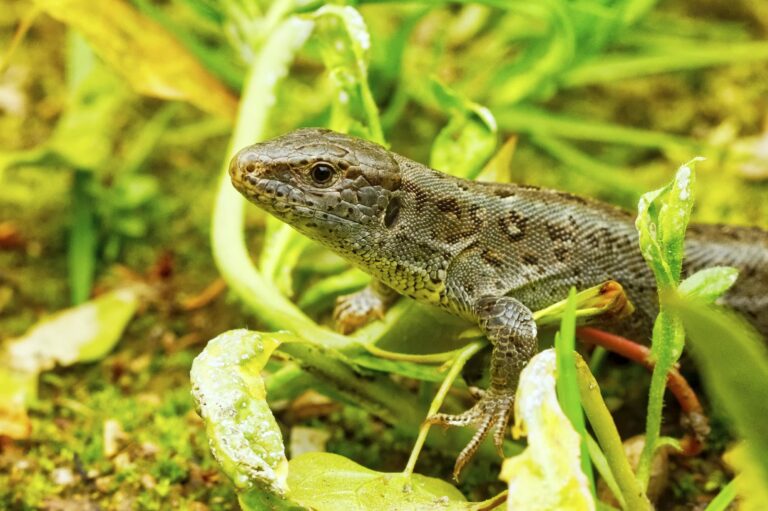Lacerta agilis

The sand lizard can reach a total length of over 20 cm. The upper side of the body is brown and bears a dark dorsal stripe surrounded by spots, while the underside is greenish to yellowish. During the mating season, the belly and sides of male lizards are brightly green colored (Schaefer 2018). Lacerta agilis inhabits both forests and grasslands, as well as quarries with loose soils, where the female buries the eggs. The mating season starts in April, and the juveniles hatch between August and September. The natural enemies of this reptile species are diverse bird species such as raptors and owls; various mammals such as badgers, foxes, hedgehogs, or domestic cats; and also other reptiles such as the grass snake. Threats to the sand lizard can include habitat loss due to development and excavation, intensification of agriculture, or the introduction of competitive species such as the wall lizard (Glandt 2018).
Nutrition: The sand lizard feeds on insects, spiders, earthworms, and snails (Glandt 2018).
Threat Status: According to the IUCN Red List for endangered species, the population density of this species is declining, but it is considered “not endangered.” In Germany, Lacerta agilis is listed as “near threatened,” but still considered “not endangered.” According to the FFH Directive (Annex IV), the sand lizard is “strictly protected.”
-
Glandt, D (2018)Praxisleitfaden Amphibien- und Reptilienschutz. Schnell – präzise – hilfreich. Berlin, Heidelberg: Springer Berlin Heidelberg.
-
Schaefer, M (2018)Brohmer – Fauna von Deutschland. Ein Bestimmungsbuch unserer heimischen Tierwelt: Quelle & Meyer Verlag GmbH & Co